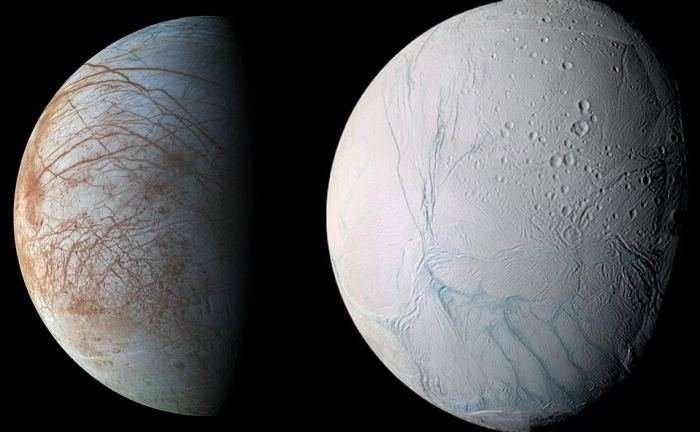Science: Life could be likelier on icy planets than rocky ones
(:E-:N-:R-AZ:C-30:V)
[I follow science because 97% of science was created by People and PEOPLE will use this tool to get out there and move across the universe. Jan]
Whereas there is only one terrestrial planet in our Solar System that is capable of supporting life (Earth), there are multiple “Ocean Worlds” like these moons. Taking this a step further, a team of researchers from the Harvard Smithsonian Center for Astrophysics (CfA) conducted a study that showed how potentially-habitable icy moons with interior oceans are far more likely than terrestrial planets in the universe.
The study, titled “Subsurface Exolife,” was performed by Manasvi Lingam and Abraham Loeb of the Harvard Smithsonain Center for Astrophysics (CfA) and the Institute for Theory and Computation (ITC) at Harvard University. For the sake of their study, the authors consider all that what defines a circumstellar habitable zone (aka. “Goldilocks Zone”) and likelihood of there being life inside moons with interior oceans.
To begin, Lingam and Loeb address the tendency to confuse habitable zones (HZs) with habitability, or to treat the two concepts as interchangeable. For instance, planets that are located within an HZ are not necessarily capable of supporting life – in this respect, Mars and Venus are perfect examples. Whereas Mars is too cold and it’s atmosphere too thin to support life, Venus suffered a runaway greenhouse effect that caused it to become a hot, hellish place.
On the other hand, bodies that are located beyond HZs have been found to be capable of having liquid water and the necessary ingredients to give rise to life. In this case, the moons of Europa, Ganymede, Enceladus, Dione, Titan, and several others serve as perfect examples. Thanks to the prevalence of water and geothermal heating caused by tidal forces, these moons all have interior oceans that could very well support life.
You can read the rest & view the other graphics here: https://phys.org/news/2017-12-life-likelier-icy-planets-rocky.html
Video: General Von Manstein: Advice on HOPELESS sitations for Nations
Many People have told me that our situation is hopeless in all our nations including here in S.Africa. In this video I take a look at brilliant men who lived through the hell of war and what they thought about hopeless and desperate situations. What did these men think who had spent years of their lives handling desperate, dangerous and hopeless situations.
Video: LIBERALS102: The Liberal Strategy Of Lying
In this video I discuss the massive difference between people who value the truth and built all of civilisation on this basis versus the Liberals who are pathalogical liars.

